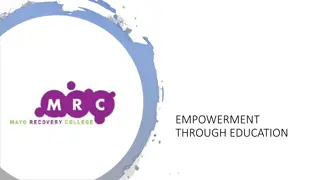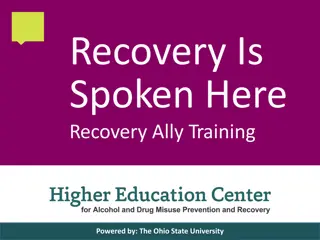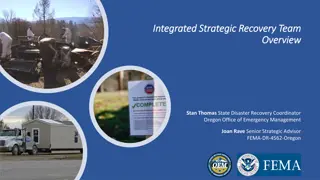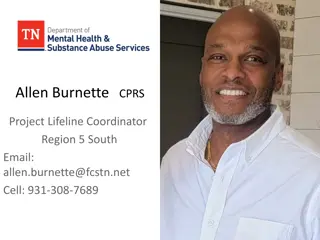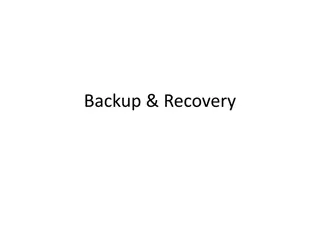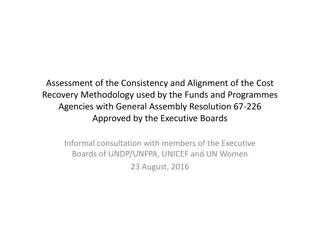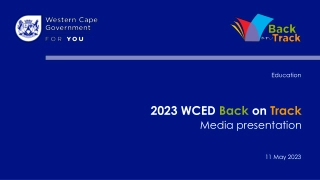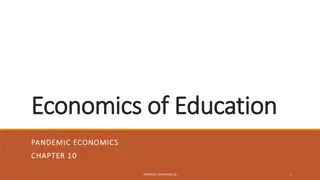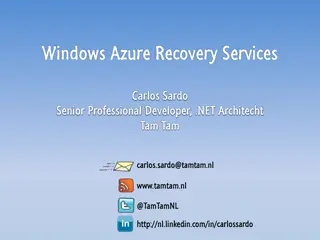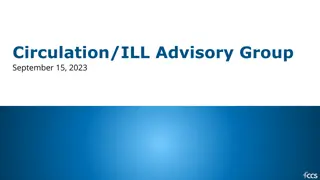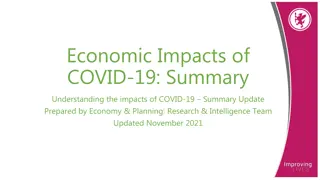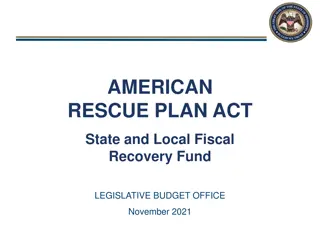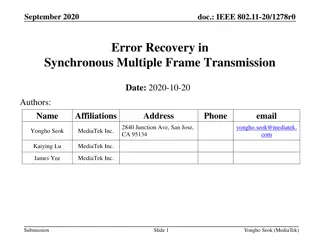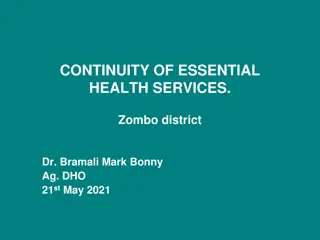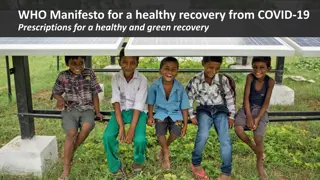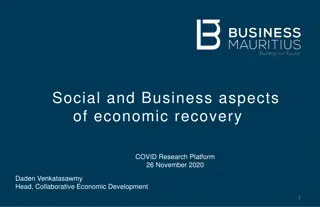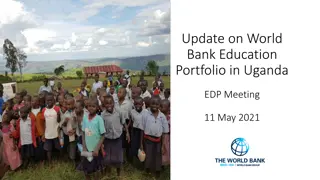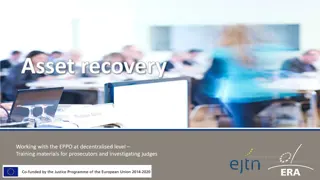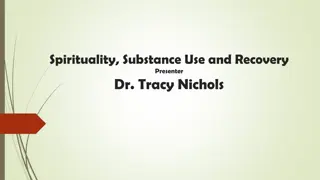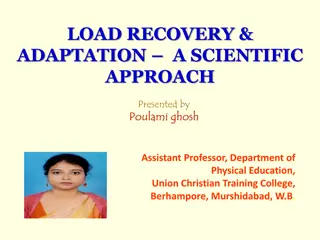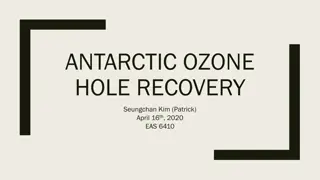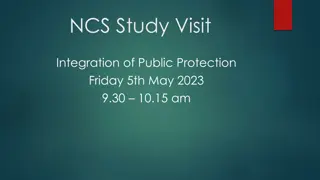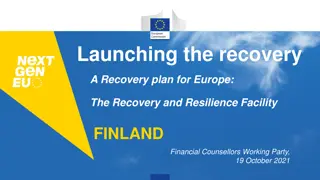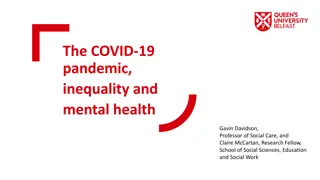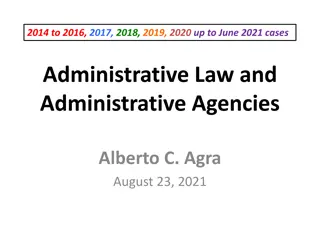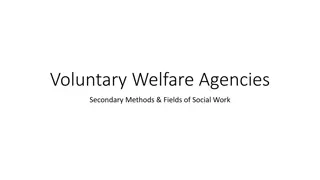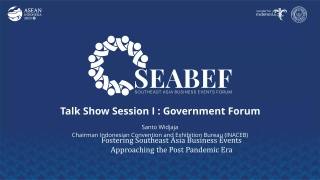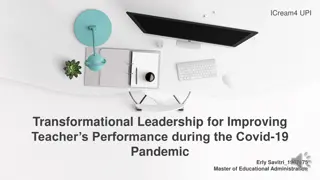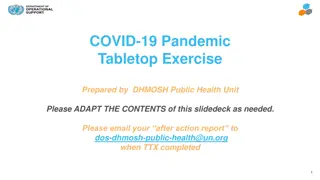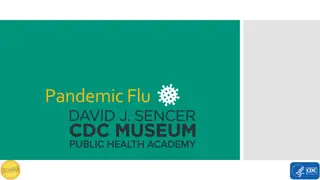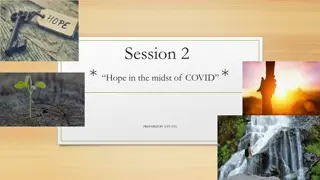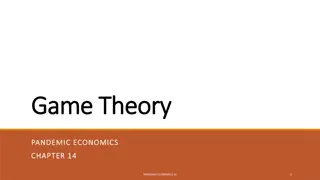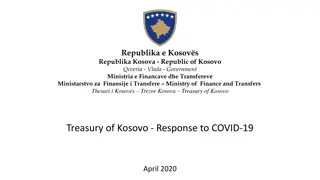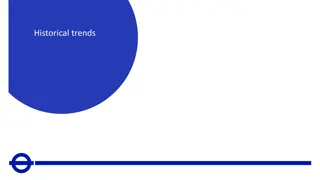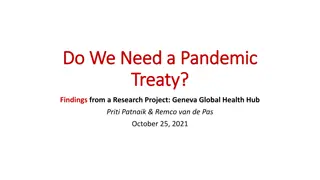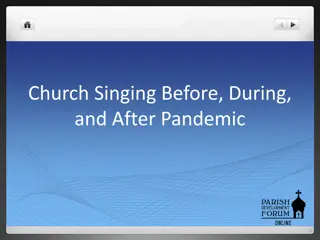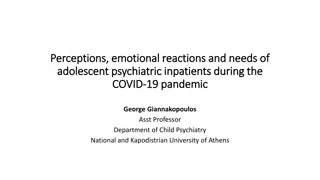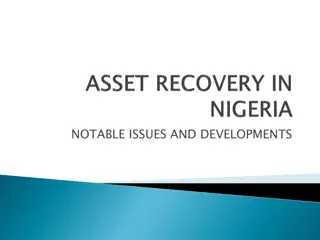Enhancing Pandemic Recovery Efforts in Education Agencies
This document provides insights into improving pandemic recovery efforts in education agencies through research grant programs offered by the Institute of Education Sciences (IES). It covers the objectives, application process, and overall mission of IES to enhance education outcomes and practices post-pandemic.
Download Presentation

Please find below an Image/Link to download the presentation.
The content on the website is provided AS IS for your information and personal use only. It may not be sold, licensed, or shared on other websites without obtaining consent from the author. Download presentation by click this link. If you encounter any issues during the download, it is possible that the publisher has removed the file from their server.
E N D
Presentation Transcript
Improving Pandemic Recovery Efforts in Education Agencies (ALN 84.305X) Corinne Alfeld James Benson Allen Ruby National Center for Education Research Institute of Education Sciences
Agenda IES and its Research Grant Programs General requirements that apply to the Improving Pandemic Recovery Efforts in Education Agencies grant program Improving Pandemic Recovery Efforts in Education Agencies (84.305X) Prekindergarten through Grade 12 Recovery Research Network (1 Network Lead and 5 Research Teams) Community College Recovery Research Network (1 Network Lead and 5 Research Teams) Application, Submission, and Review 2
U.S. Department of Education Institute of Education Sciences (IES) IES is the independent research arm of the U.S. Department of Education, authorized by the Education Sciences Reform Act in 2002. We are non-partisan. We are charged with providing rigorous evidence to inform education practice and policy, and sharing this information with educators, parents, policymakers, researchers, and the public. The overall mission of IES is to: Describe the condition and progress of education in the United States Identify education practices that improve academic achievement and access to education opportunities Evaluate the effectiveness of Federal and other education programs 4
Objectives of IES Research Grant Programs Identify the practices, processes, programs, and policies of students, teachers, schools, districts, and states that can be influenced by the education system that are linked to student education outcomes Develop or identify education interventions (practices, programs, policies, and approaches) that enhance education outcomes and can be widely deployed Understand the processes that underlie the effectiveness of education interventions and the variation in their effectiveness (what works for whom, where, and under what conditions; key components of interventions) Develop measures of (e.g., processes, education outcomes, implementation) and validate them using student outcomes Identify interventions and measures that do not work as expected Develop research methods for use by education researchers 6
Intended Outcomes of IES Education Research Grants Improved access to a high-quality education for all learners from early childhood through adulthood, particularly those at risk of failure Improved academic achievement for all learners from early childhood through adulthood, particularly those at risk of failure Reduced opportunity gaps and achievement gaps between high- and low-performing learners Improved access to, persistence in, progress through, and successful completion of postsecondary education 7
Projects Should Yield Meaningful Findings and Products Contribute knowledge and theory of teaching, learning, and organizing education systems Identify the benefits and effects that programs, policies, and practices have on relevant outcomes for learners Identify costs and cost effectiveness of such programs, policies, and practices Disseminate findings and products in a way useful to and accessible by educators, parents, policymakers, researchers, and the public 8
Focus on Student Education Outcomes Projects must address student academic outcomes Learning and achievement in the core academic content areas. Student progression through the education system Other student outcomes when appropriate as well Social, behavioral, emotional, and mental health outcomes Employment and labor market outcomes Developmental and functional outcomes for students with or at risk for disabilities Also include teacher outcomes if these are addressed by the recovery activities 9
Student Academic Outcomes by Age/Grade/Sector Prekindergarten school readiness outcomes, including pre-reading, language, vocabulary, early-STEM knowledge, English language proficiency, digital literacy, and social and behavioral competencies that prepare young children for school K-12 learning, achievement, and higher order thinking in the academic content areas of literacy, STEM, and social studies; English language proficiency; career and technical education (CTE) attainment; and progression through education systems as indicated by course and grade completion, retention, high school graduation, and dropout 10
Student Academic Outcomes by Age/Grade/Sector (cont.) Postsecondary education learning, achievement, and higher order thinking in postsecondary courses; and access to, persistence in, progress through, and completion of postsecondary education, which includes developmental education courses and bridge programs as well as programs that lead to occupational certificates, associate s, or bachelor s degrees Adult education achievement in literacy, English language proficiency, and numeracy, as well as access to, persistence in, progress through, and completion of adult education courses and programs provided at community colleges. 11
Importance of Examining Student Subgroups The American Rescue Plan Act of 2021 identifies the following subgroups for IES to carry out research related to addressing learning loss caused by the coronavirus: students experiencing homelessness children and youth in foster care, and subgroups identified in section 1111(b)(2)(B)(xi) of the Elementary and Secondary Education Act of 1965 which includes major racial and ethnic groups, economically disadvantaged students, children with disabilities, English proficiency status, gender, and migrant status 12
Education Settings Proposed research must address education recovery activities implemented in U.S. prekindergarten, elementary, and/or secondary education systems implemented by state and local agencies (including U.S. Territory and tribal agencies), or in U.S. postsecondary and/or adult education programs implemented by state and city community college systems 13
Improving Pandemic Recovery Efforts in Education Agencies (ALN 305X)
To Better Understand the Improving Pandemic Recovery Grant Program Read the Request for Applications (RFA) Overview and eligibility General requirements Project Narrative Requirements and Recommendations Appendices and other narrative content Award length and size Take part in virtual office hours: https://ies.ed.gov/funding/technicalassistance.asp View the webinars for applicants: https://ies.ed.gov/funding/webinars/index.asp Talk to the designated IES program officer (email for a meeting) 16
Purpose of Improving Pandemic Recovery Grant Program Support research to counteract instructional and learning loss encountered by many learners during the COVID-19 pandemic Identify, explore, and evaluate state and local programs and policies designed to accelerate learning and recovery of those learners Provide evidence to education agencies to improve learner engagement, reengagement and achievement through recovery activities. Address these points for underrepresented student subgroups that were disproportionately affected by COVID-19 17
Examples of Research Questions to be Addressed How have the disruptions in education due to COVID-19 been associated with changes in learners achievement and opportunities to learn during the disruptions? How have achievement and opportunities to learn changed during the recovery from the disruptions? Are recovery activities being implemented as planned and are they reaching the intended learners? Which recovery activities (e.g., practices, programs and services, and policies) are reengaging learners in their education and help meet their current social, emotional, and mental health needs? Which recovery activities increase student learning in academic subjects, support progress through the education system, and offset learning loss that occurred due to the disruptions? Which recovery activities support educator practice and well-being thereby supporting student reengagement and learning? 18
Create a Research Infrastructure on Recovery Establish Two Research Networks Prekindergarten through Grade 12 Recovery Research Network Community College Recovery Research Network Composition of Each Research Network One Network Lead to coordinate the Network, provide national leadership on learning acceleration and recovery, and share findings from the network with education agencies Five Research Teams, each of which includes at least one education agency, carrying out research on learners being served by that agency and the recovery activities in which the learners are engaged. 19
Eligible Applicants Institutions that have the ability and capacity to conduct rigorous research are eligible to apply. Research Teams: One or more education agencies must be included as the primary applicant or a subaward on any Research Team application. Education agencies include: State and local agencies (including U.S. Territory and tribal agencies) that oversee prekindergarten, elementary, and/or secondary education, and State and city community college systems that provide postsecondary and/or adult education. To be eligible, the education agency must be implementing the recovery program or policy being proposed for study. 20
Prekindergarten through Grade 12 Recovery Research Network The PreK Grade 12 Recovery Research Network will: produce research findings that identify and improve activities that support recovery, work with state and local education agencies to improve their recovery activities, train early career researchers, and disseminate information to multiple stakeholders across the nation to help increase learner engagement and achievement. 21
PreK - Grade 12 Network: Research Teams Carry outresearch that will help education agencies identify learners for whom recovery activities are needed to help them reengage and achieve in education and/or better understand and improve the recovery activities provided to these learners. You may propose any type of research (e.g., descriptive, correlational, predictive, continuous improvement, and/or causal analyses) that will address the education agency s research questions and provide findings that the agency can use in its decision making on recovery activities. 22
PreK - Grade 12 Network: Network Lead Coordinate network activities, holding network meetings, and promoting training of early career researchers across all teams Organize network working groups on specific recovery issues Carry out an ongoing scan of the recovery needs of student subgroups that were disproportionately affected by COVID-19 and the recovery activities states and districts are implementing to support these students Connect the network to other stakeholders involved in recovery activities Establish a forum for identifying recovery research needs Provide national leadership and dissemination 23
Collaboration of PreK-Grade 12 Network Lead and Research Teams The Research Teams and Network Lead will collaborate with one another to identify common measures, discuss research plans, offer cross-site training and/or mentoring of early career researchers (including agency personnel) share emerging findings, and give and receive constructive feedback. 24
Community College Recovery Research Network The Community College Recovery Research Network will: produce research findings that identify and improve activities that support recovery, work with state and city community college systems to improve their recovery activities, train early career researchers, and disseminate information to multiple stakeholders across the nation to help increase learner engagement, achievement, and completion. 25
Community College Network: Research Teams Carry outresearch that will help community colleges identify learners for whom recovery activities are needed to help them reengage and achieve in education and/or better understand and improve the recovery activities provided to these learners. You may propose any type of research (e.g., descriptive, correlational, predictive, continuous improvement, and/or causal analyses) that will address the community college system s research questions and provide findings that the system can use in its decision making on recovery activities. 26
Community College Network: Network Lead Coordinate network activities, holding network meetings, and promoting training of early career researchers across all teams Organize network working groups on specific recovery issues Carry out an ongoing scan of the recovery needs of student subgroups that were disproportionately affected by COVID-19 and the recovery activities community colleges are implementing to support these students Connect the network to other stakeholders involved in recovery activities Establish a forum for identifying recovery research needs Provide national leadership and dissemination 27
Collaboration of Community College Network Lead and Research Teams The Research Teams and Network Lead will collaborate with one another to identify common measures, discuss research plans, offer cross-site training and/or mentoring of early career researchers (including agency personnel) share emerging findings, and give and receive constructive feedback. 28
For all Applications: Dissemination Plans and History Present a plan to disseminate project findings and resources so that they make meaningful contributions to education policy and practice Describe your dissemination history to demonstrate your ability and capacity to disseminate research findings to a range of audiences Research Team applications provide this in Appendix A Network Lead applications provide this under the Network Lead Activities section of the Research Narrative 29
Maximums Network Role Maximum Number of Awards per Network Maximum Grant Duration Maximum Grant Award Network Role Maximum Number of Awards per Network 5 3 years Maximum Grant Duration Maximum Grant Award 3 years Research Team $3,000,000 per team Network Lead 1 $3,000,000 Network Lead 1 3 years $3,000,000 Research Team 5 3 years $3,000,000 per team 30
Application Submission, Review, and Resubmission 31
Important Dates Letter of Intent Due: https://iesreview.ed.gov/LOI/LOISubmit Application Package Available: https://www.grants.gov Application Deadline: https://www.grants.gov Start Date: 1/13/2022 12/16/2021 3/10/2022 11:59 pm Eastern 9/1/2022 32
IES Application Submission Guide and Webinar IES Application Submission Guide Instructions for obtaining the application package from grants.gov, completing the application package including the attachments and accompanying forms, and submitting the application Follow the guide to help make sure your application is complete and received on time without errors through the Grants.gov website IES Webinar: IES Application Process at https://ies.ed.gov/funding/webinars/index.asp 33
Peer Review Process Overseen by the IES Office of Science Applications are reviewed for compliance and responsiveness to the RFA (e.g., submitted on time with acceptable formatting, meet Requirements) before being accepted for peer review Accepted applications are assigned to panel according to the match between the overall expertise of reviewers on each panel and the content and methodological approach proposed in each application. See the Procedures for Peer Review of Grant Applications (https://ies.ed.gov/director/sro/application_review.asp) 35
Funding Decisions The following are considered in making award decisions for responsive and compliant applications: Scientific merit as determined by scientific peer review Performance and use of funds under a previous federal award Contribution to the overall program of research described in this request for applications Ability to carry out the proposed research within the maximum award and duration requirements Availability of funds 36
Notification All applicants will receive email notification that the following information is available via the Applicant Notification System: Status of award Reviews 37
Program Officers are a Resource Discuss your research idea with a program officer Email a synopsis and schedule a time for a call Email short questions You will hear from us if you submit a letter of intent We will review draft applications, given we receive drafts within sufficient time We are available for discussion after you receive your reviews 38
Program Officers Prekindergarten through Grade 12 Recovery Research Network Dr. Corinne Alfeld: Corinne.Alfeld@ed.gov Dr. Allen Ruby: Allen.Ruby@ed.gov Community College Recovery Research Network Dr. James Benson: James.Benson@ed.gov 39




